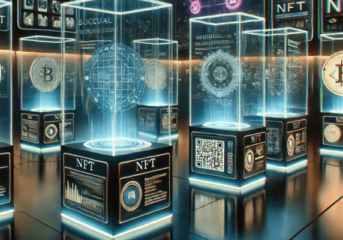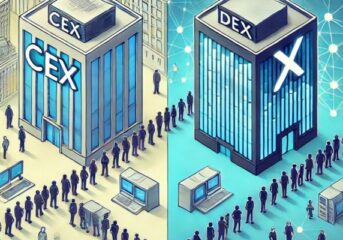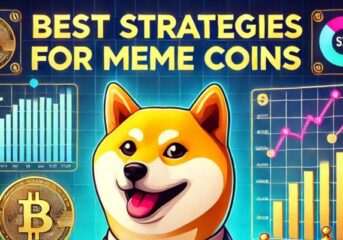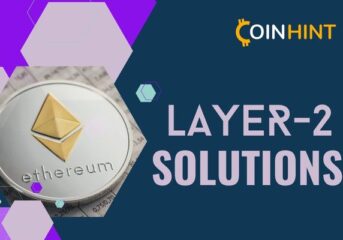Cosmos Price Today - ATOM Live Charts
-
MarketCap$ 931,576,731
-
Volume$ 33,930,412
-
Change-1.29%
Overview: What is Cosmos (ATOM)?
Cosmos (ATOM) is the native token of the Cosmos blockchain, the Cosmos Hub. Cosmos aims to create an “internet of blockchains” to enable any blockchain to communicate and transact with any other. Cosmos provides an open-source suite of tools for developers to build dApps and projects on the network quickly and easily.
Jae Kwon and Ethan Buchman founded the Cosmos network in 2014 and created Tendermint Core, the consensus algorithm eventually used. The Interchain Foundation (ICF), a Swiss non-profit that funds blockchain initiatives, aided the project. The ICF raised $17 million in an initial coin offering in 2017. The Cosmos network launched in 2019.
What Makes Cosmos (ATOM) Coin Unique?
Cosmos aims to form an ecosystem of networks sharing data and tokens, all powered by blockchain techology and without central governance. Cosmos focuses on customizability and interoperability, making it relatively unique, though it has competitors.
What is Cosmos Used for?
Cosmos (ATOM) is the token of the Cosmos Hub blockchain. It’s required for paying gas fees, processing transactions, and securing the network. It is also used for staking via validator nodes and governance of the Cosmos Hub. Holders who participate in governance vote on network issues and the direction of its future development. The more ATOM held, the greater the voting power. ATOM is also bought and sold on cryptocurrency exchanges.
How Does Cosmos (ATOM) Work?
Cosmos has several components: the Cosmos Hub and its Tendermint Core, the Cosmos software developer kit (SDK), its inter-blockchain communication protocol (IBC), and the ATOM token. Cosmos is a package of tools for developers and a means by which different blockchain networks can communicate, answering blockchain’s interoperability issue.
Tendermint Core is Cosmos’ proof-of-stake consensus mechanism. It integrates the consensus and networking layers of Cosmos into one layer, separating an application layer. Developers use Tendermint Core as a base to create their blockchains and only need to make alterations to the application layer. This makes it much faster and easier for developers to launch new chains, and applications can be created easily in many popular programming languages.
The Cosmos SDK is a set of tools for developers, essentially open-source modules that developers can plug into their applications without writing every line of code.
The Cosmos IBC allows chains in the Cosmos ecosystem to communicate. IBC uses a system of Hubs and Zones. Zones are blockchains. Hubs are also a type of middleware blockchain that connects zones to achieve interoperability.
Holders of ATOM can stake their coin to become a validator and receive ATOM as a reward for their participation. Holders can also delegate to or stake coins with a validator for partial rewards. The Cosmos Tendermint consensus mechanism chooses which validator creates a new block (and receives the reward) using “delegators,” who vote on which validator creates the next block. Delegators are also rewarded, but both can lose assets via “slashing” if they don’t act in the interests of the network.
How Is the Price of Cosmos (ATOM) Determined?
The ATOM coin price is influenced by market sentiment, its utility in the Cosmos ecosystem, and the success of Cosmos, as well as other market factors. ATOM coin has a maximum supply of 380.81 million.
The following factors influence ATOM price:
- Supply, demand, liquidity, and scarcity
- ATOM and cryptocurrency market sentiment
- The success and use of Cosmos
- The performance of Cosmos competitors
What Is the Cosmos Coin Price Prediction for 2030?
Cryptocurrency prices are extremely difficult to predict, but popular analysts and crypto websites have predictions for the Cosmos coin price or ATOM token for 2030. CoinCodex believes the ATOM price could rise between $9.60 and $14.39. Binance says the ATOM price could reach $15.41.
How Is the Cosmos (ATOM) Network Secured?
The Tendermint Core proof-of-stake consensus mechanism, created by the founders of Cosmos, secures the Cosmos Hub blockchain.
Where Can You Buy Cosmos?
ATOM can be bought on major cryptocurrency exchanges, including Binance, OKX, =Coinbase, KuCoin, Bybit, and Kraken and the decentralized exchanges Osmosis and Uniswap.
How Can You Store Cosmos (ATOM)?
Cosmos (ATOM) can be stored in various types of crypto wallets, including exchange wallets where the exchange holds the private keys, a software wallet like MetaMask, or a hardware wallet such as a Ledger device.
FAQs
Is ATOM a good investment?
The performance, popularity, and uses of the Cosmos Hub blockchain and ecosystem make ATOM popular with
ecosystem supporters and investors. Investors should decide if ATOM is a good investment based on thorough research, investment strategy, and risk tolerance, as cryptocurrencies are unregulated and incredibly volatile.
Who owns Cosmos?
Jae Kwon and Ethan Buchman founded the Cosmos network in 2014 with the support of the Interchain Foundation (ICF). This Swiss non-profit funds blockchain initiatives and a subsequent ICO, the Cosmos network, launched in 2019.
What is the future of Cosmos Crypto?
The future of any cryptocurrency is complicated to predict. There are many competing tokens and platforms, high price volatility, and Under-regulation. The future performance of the Cosmos coin (ATOM) will depend on how widely developers use the Cosmos blockchain and ecosystem. Hundreds of applications and services are running on Cosmos, and major blockchain-based platforms, including Binance, use its interoperability.
What can Cosmos do?
Cosmos enables interoperability between blockchains and developers to build their blockchains, applications, and projects using its technology.
Is Cosmos better than Ethereum?
Cosmos is arguably more scalable, flexible, and interoperable than Ethereum, but Ethereum has been seen as a reliable and secure network for developers for some time. It has a much larger ecosystem and over 3,000 apps. Both are still innovating and developing.








